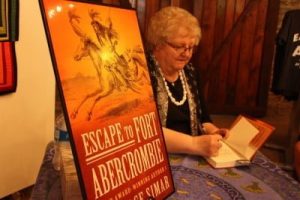The U.S. Army hastily put up a fort around the stage station at Pomme de Terre immediately after the 1862 Sioux Uprising. The goal was to provide back up support to Fort Abercrombie farther west in Dakota Territory. Fort Pomme de Terre was a small garrison consisting of troops marched in from Fort Ripley in Morrisson County to the east.
I’ve been to this site in Grant County between Elbow Lake and Ashby and remember the prairie grasses rippling in the wind and the panoramic view from the elevated plateau close to the Pomme de Terre River. The westerly winds blow steady across the prairies and carry the smell of sun on grass and freshly tilled soil.
When we look back upon this place and time, we do so with the knowledge that the Sioux Uprising was mostly over by the time the fort was built. Fort Pomme de Terre inhabitants did not have this luxury of knowing what would happen. Instead these few soldiers and early settlers hunkered down to survive the winter, not knowing if there would be additional attacks on the fort, fearful for their lives and farmsteads. Supplies were short and they were mostly isolated from the rest of the world. The carnage of the uprising was fresh in their minds and no one underestimated the ferocity of the Sioux.
The army commanded all settlers to winter inside the fort. Soldiers could not be spared to patrol the isolated farmsteads and back in those days there were no telephones or other means of calling for help. I’ve read of the parties and dances held within the stockade to help pass the long winter months. Soldiers drilled, cared for the animals and took turns standing guard. The occasional mail and dispatches from Fort Snelling came by army dispatcher until the snow became too deep. Grim news from the Civil War came with every dispatch and soldiers agreed it better to winter in Fort Pomme de Terre than face the terrors of the southern battlefields. A group of men held prayer meetings in the woods next to the stockade. Can’t you imagine their fervent prayers for family back home and friends fighting in the south?
I imagine the snow heaped around the stockades, making it easier for renegade Indians to creep over the wall if they so desired. I imagine the way the guards froze their feet and noses as they stood watch in subzero weather and prairie gales. And yet at times there was music and laughter. The pioneer folk were hardy stock and if they had to be fortified all winter, they would make the best of it.
My book, POMME DE TERRE, puts my characters at Fort Pomme de Terre that winter of 1863, directly after the uprising. If you haven’t had a chance to read it, you might enjoy curling up by the fire and joining my characters in this fascinating period of history.











